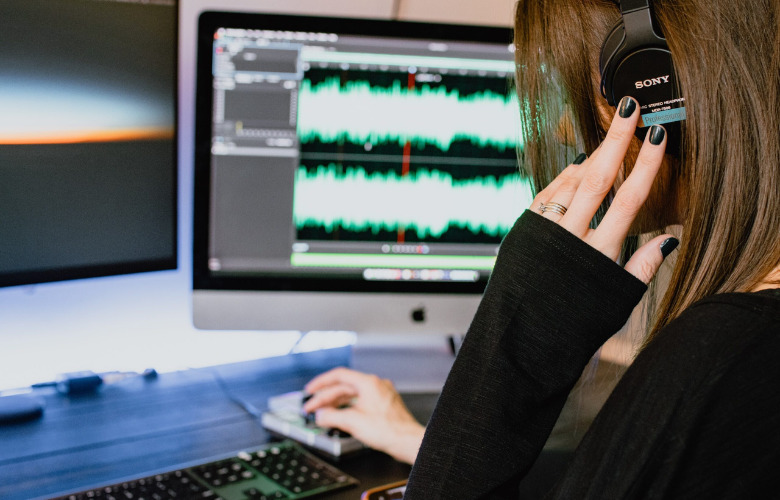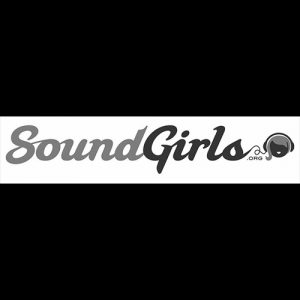
I have been fortunate enough to lead a very diverse career in sound design and audio engineering. Live theater and events – my bread and butter for many years – gave me advanced equipment and signal flow experience; the ability to collaborate closely; and to problem-solve on my feet. Game audio and film sound encourage me to dig deep creatively and focus on sonic details.
Broadcasts and podcasts have made me very good at mixing quickly and have expanded my knowledge of equipment. I have had several conversations about how all these industries are related, yet I still find many people who believe one can only specialize in a single sector. That may be true for an advanced level in some audio industries. However, while a sound designer is still figuring out what they like to do, or heck even if they just have to pay the bills– it may be easier to hop over to another industry than they think.
This article is the first of two where I draw comparisons between all the fields I personally have worked in. This is by no means an exhaustive list – especially since my experience within different industries consists of varying calibers. But I challenge us all to see the similarities between different industries so that we can build audio teams with diverse experiences.
Both require audio repair while preserving the sound of words and letters to keep speech intelligible. Often the editor or mixer is matching rooms or ambience via reverb and equalization, smoothing transitions, and processing the audio so it is pleasing for the listeners’ experiences. Despite these similarities, there are some notable differences.
The first and obvious difference is that dialogue editing is done to picture and timecode. If words do not match mouth movements, it is really odd to watch! Podcasts fortunately do not have to match any picture. Editors can slice and dice as needed, so long as edits sound natural.
Another difference is that film dialogue is usually recorded with a boom and lav mics. Dialogue editors phase align all the audio provided from the picture editor, and pick the mics that sound best for each scene.
The final large difference is related to microphones: film sound might call for some ADR recordings. (Automated Dialogue Replacement — though there are arguments for that acronym that don’t fit within the topic of this article.) ADR usually gets implemented for supplemental voiceovers or if the location sound for a scene is not good. Podcasts might retract their host narration, but it just isn’t the same and not as complicated as ADR recording. ADR recording has to be performed to picture. If the performance does not sell it, the recording will not work in the context of the scene. The performance has to match the picture, the time stamps, and the intent of the acting. Re-recordings for a podcast have a lot more flexibility to move around since they do not have to sync to picture.
Two very related fields. Musical theater involves a lot of paperwork preparation, and collaboration, particularly between the scenic and costumes departments, sound system design, room acoustics, sound cues, and show control. By the way, I separate “show control” and “sound cues” because more often than not, QLab (playback and live show control software) often fires OSC or MIDI cues to lighting and even automation systems.
Sound design for themed entertainment (theme park attractions, installations, brand activations, etc.) is like the Hulk of musical theater sound design. Both roles involve a knowledge of psycho- and room acoustics, close collaboration, a lot of paperwork, advanced knowledge of signal flow, sound systems, and IP protocols for device connection and show control. But themed entertainment takes the process to a whole other level.
From the paperwork side, both involve input/output and equipment lists, device tracking, sound cue sheets, and drafting, but themed entertainments may also add more complex IP address tracking spreadsheets. Theater implements Dante, OSC, and other IP technology as necessary, but there may be more network switches for a theme park attraction.
Both experiences require knowledge of room acoustics and sound system devices to account for coverage of sound. Audience is different, however; they are sitting in one spot for a musical, and they move throughout an attraction. Themed entertainment demands immersion. Audiences should feel as if the story is in a real world. For that reason, system design needs to account for a moving audience and consistent coverage — while keeping the speakers hidden.
Show control and sound cue implementation might be the element that is the least alike between these two jobs. The software itself may or may not be different for a themed entertainment experience. While musical theater cue lists are typically linear, the themed entertainment sound designer also has to think non-linearly, since a cue might need to reset/set up for another part of the experience. On really big themed entertainment projects, show control — building networks messages that fire cues for all departments — is such an undertaking that it might be a separate job from that of the sound designer. On really large-scale projects, show control and networking are two separate jobs. Due to size, time, and budget, roles in musical theater sound teams are not generally split up as much. The sound designer, or maybe the associate sound designer, will handle sound system design, sound effects, and show control programming.
That’s a wrap on part one! My hope is that drawing these comparisons empowers other audio professionals to go for a job they might not consider otherwise. Audio engineers further develop their skills by working outside of their comfort zones. And, as mentioned at the top, our teams become creative and innovative when we bring on diverse people with different backgrounds.
Why You Are Failing in Your Music Career


The mission of SoundGirls.org is to inspire and empower the next generation of women in audio. Our mission is to create a supportive community for women in audio and music production, providing the tools, knowledge, and support to further their careers. SoundGirls.Org was formed in 2013 by veteran live sound engineers Karrie Keyes and Michelle Sabolchick Pettinato and operates under the Fiscal Sponsorship of The California Women’s Music Festival, a 501(c)3 non-profit organization. In 2012, Karrie and Michelle participated in the “Women of Professional Concert Sound” panel at the AES Conference in San Francisco. The panel was hosted by the Women’s Audio Mission (WAM) and moderated by WAM founder Terri Winston. Terri brought together five women working in live and broadcast audio. The groundbreaking panel (which also included Jeri Palumbo, Claudia Engelhart and Deanne Franklin), provided young women and men a glimpse into life on the road, tips and advice, and a Q & A with the panelists. More importantly though, was how incredibly powerful the experience was for the panelists. We had all been in the business for 20 years or more, yet most of us had never met before that day and within minutes we bonded like long-lost sisters. We were struck by how similar our experiences, work ethics, and passions were and wondered why our paths had never crossed and how our careers would have been different had we been there to support each other through the years. Each of us are strong on our own, but together we were even stronger and a powerful force. We were empowered. Each of us had been asked hundreds of times in our careers: Are there other women doing sound? How did you get into sound? How would a young woman go about getting into sound? Through creating SoundGirls.Org, we hope to establish a place for women working in professional audio to come for support and advice, to share our success and failures, our joys and frustrations, and for empowerment and inspiration.
Read Full Profile© 2021 TheatreArtLife. All rights reserved.

Thank you so much for reading, but you have now reached your free article limit for this month.
Our contributors are currently writing more articles for you to enjoy.
To keep reading, all you have to do is become a subscriber and then you can read unlimited articles anytime.
Your investment will help us continue to ignite connections across the globe in live entertainment and build this community for industry professionals.